Review: Cherry Audio Elka-X emulation of the Elka Synthex
In the latest software emulation of a classic synthesizer Cherry Audio gets to grips with the Italian-made Elka Synthex. While it seems to have aced the uninspiring front panel, has the Elka-X captured the lush tones and multiple layers of this polyphonic legend?
Elka Synthex
The original Elka Synthex was designed by Italian designer Mario Maggi and produced by organ and string synth manufacturer Elka from 1981 to 1985. Only 1850 made it to the shops, and now it’s a very sought-after instrument.
It arrived at the time of the classics such as the Sequential Circuits Prophet 5, Oberheim OB-Xa and Roland Jupiter-8. So, what could it possibly offer in the face of such magnificent machines?
Well, first of all, it never went out of tune. The Synthex embraced the futuristic innovation of the DCO, the digitally controlled oscillator, which used a high-speed digital clock and divider to minimise frequency fluctuations. DCOs formed the basis of the Roland Juno range that arrived a whole year later. It also had interesting things like a 4-track sequencer, joystick controller and cross modulation of pulse width. It had ring modulation and, unusually at the time, a multimode filter. Elka also put in some organ-style influence in the chorus effect and dual-layer nature of the voices. You could run as a single 8-voice synth either polyphonically or in mono or unison, split with 4-voices on the upper and lower halves of the keyboard or layered as a pair of 4-voice patches.
You are currently viewing a placeholder content from YouTube. To access the actual content, click the button below. Please note that doing so will share data with third-party providers.
As a polyphonic synthesizer, it is known for its thick, lush and deep pad sounds, moving drones and blistering leads. Jean Michel Jarre used it as the basis of his Laser Harp sound, Nick Rhodes of Duran Duran uses it all over the place, and Stevie Wonder picked up the last one ever made.
Cherry Audio ELKA-X: the facts
Before I jump into reviewing Cherry Audio’s Synthex emulation, let’s check out the specs and any extras that have been worked into the virtual instrument.
Cherry Audio says it’s been working with a pristine Synthex in the hope of capturing every nuance and character of the synthesizer. It’s all there, the dual DCO oscillator configuration, the multimode filter, VCA and filter envelopes, Chorus and the ease of button and knob programming. The preset selection section of buttons has gone and been replaced by an expanded effects section, but there are plenty of other changes too.
The polyphony has gone up to 16 voices, the LFOs have been expanded, velocity has been added to the envelopes, and the multimode filter now has a 12 dB/Oct lowpass mode. Cherry Audio has put in an arpeggiator, added a Chord Memory and level controls and panning for the layers. In addition to the Chorus effect, there’s now an Echo and Reverb at the stereo end of the signal chain and are completely independent for each layer. And of course, it’s all MIDI controllable.
Elka-X works on both Windows and macOS as AU, VST, VST3, AAX and standalone formats. The retail price is $59, but it’s available for a time for $39, and you can also download a free 30-day demo, so definitely do that if you want to experience this synth yourself.
Cherry Audio Elka-X review
I wasn’t really prepared for how this sounds. I’ve been listening to Synthex demos and trying to get a sense of a synth which I admit I’ve never played. And the sounds are really interesting. There’s a thickness, a movement, a solid wall of sound that builds into a very intense synthesizer experience, and that’s exactly what you get when you plunge yourself into the Elka-X.
I had no doubt that Cherry Audio would do a good job, as its track record indicates, but the sounds in this thing are immense. I’ve got plenty of Prophet-5 and Oberheim virtual instruments, and all of them sound great, but where they have a nuanced and elegant warmth and tone, Elka-X bulldozers in with an explosion of synthesizerness. There’s something about the layering that gives it a big synth sound. It’s more like those huge workstation synths that came much later, where a ton of things happen on a single note press but wrapped up in the wobbly awesomeness of analogue synthesis. Those first impressions are impressive.
Authentically plain
My other first impression was that this is the dullest interface I’ve ever seen. Cherry Audio do tend to rock the this-was-rendered-in-2003 vibe with their graphical user interfaces, and so the copy/paste textures and clip-art knobs are not a big surprise, but they always disappoint me just a little tiny bit. But then, one of the problems the Synthex had was that it wasn’t very beautiful. Elka had obviously taken notes from the Prophet-5 but had somehow fudged it into something cold, square and functional. And so, in that regard, Cherry Audio has made the interface authentically mediocre.
In terms of visual flair, the software has a “Focus” button that zooms into the synth to give you a clearer view of what you’re doing, but honestly, it doesn’t feel very necessary as the interface is certainly very clear.
It’s not that something has been lost; it’s just that there is something tangible to be gained from an inspirational interface. However, this has nothing to so with how this thing sounds or how it interacts with the will of the musician. The Synthex was definitely something you had to hear to appreciate.
Cherry Audio Elka-X Preset heaven
Going through the presets is like adventuring through a synthesizer paradise. The original Synthex came with 40; here, we have over 500, and they are magnificent. There’s so much going on in some of these presets that you feel like a prog-rock superstar one minute and a Wendy Carlos synth orchestra the next. The sound is immense.
The presets cover all the usual territory around the basses, leads, pads, plucks, strings and brass sounds. But there are some remarkably good bells and sound effects. Every couple of clicks you come across something very familiar, and you can’t help but play with them. There’s a bank of Arp and Chord presets to showcase those two new features, and they are completely delightful. And then you hit the Sequences.
Sequencer
Cherry Audio Elka-X has retained the 4-track sequencer, and it’s an absolute riot. The synth just goes off into some other dimension with cascading tones, running basslines, thick drones and all-encompassing orchestrations. The sequencer is dead easy to programme. Just enter a string of notes and rests in a bit of an SH-101 style, and you’re off. You can set it to run the Upper or Lower patch. You can have up to 4 melodies going off at once while transposing or playing along on the other layer. If you want to take things in an unexpected direction, then patch the LFO to the sequencer rate and hold on tight.
There’s a raspiness to the sound, a fierceness and an edge that’s really quite exciting. It’s a synth that wants to be noticed. It’s not content to sit back and pad out your atmospheres, it wants to turn you into a synth soloing keyboard wizard.
Synthesizing with the Cherry Audio Elka-X
So what’s the architecture like? Well, for the most part, you have regular subtractive synthesis action. Two oscillators going into a multimode filter with envelopes and LFOs. You can add some glide or portamento, mix in some pink or white noise and add some effects. There’s plenty to enjoy as a regular analogue synthesizer. But the Elka-X has a lot more going on in the oscillator department than you would normally expect.
You have three play modes. Polyphonic, Single, which plays a single dual-oscillator voice, and Unison. Unison is a massive stack of oscillators that turn frothy as you dial in the Unison Detune. There’s a very simple Chord Memory where you push a button, play a chord, and then you one-finger that same chord for as long as the button is active. You can also sync Osc2 to Osc1 if you must have those waveforms absolutely on the money.
For the two oscillators themselves, they delight in detuning against each other. You have octave buttons, semi-tone transposing and then +-25 cent tuning. You can easily set up subs, intervals and octaves within your voice or give it a delicious amount of drift. For waveforms, you have triangle, sawtooth and a fixed square wave. A separate pulse wave provides a source of pulse width modulation which has no effect on the square.
Unusual oscillations
There’s a more unusual waveform option labelled “OSC2 PWM” on oscillator 1. What it does is route the waveform from Osc2 directly into modulating the pulse width. This is audio rate PWM and generates a whole load of mostly nasty harmonics along with some sweet spots. With both oscillators still running, it can add some edge to the sound that’s dependent on the octave and transpose settings of modulating oscillator. If you turn down the audio level of the modulator, then you can get some serious crunch going on. The last option is Ring Modulation which is used in addition to another waveform. It offers a similar palette of metallic and glitchy tones that often finds itself in FM territory. This is where most of the Cherry Audio Elka-Xs edginess comes from.
The two LFOs are also a bit different. LFO1 has multiple waveforms, a Delay knob and two Depth knobs for two different routing options. On destination A we have oscillator pitch and PWM; on destination B, we have filter cutoff, amp and the fun-to-the-point-of-hilarious sequencer rate. You can sync the LFO to the tempo and also shift depth responsibilities over to the mod wheel. LFO2 is a bit odd. It has a single wave shape and can only be sent to the oscillator or filter cutoff. You can set an initial amount and an initial frequency and then push the frequency acceleration to speed it up. You would normally control this with the joystick, which probably explains the oddness with a regular keyboard. You’ll also find “Bend” controls which link it to your pitch bend wheel.
Added extras
I’ve not played a Synthex myself, and so I’m not troubled by Cherry Audio adding a few things here and there. The Chorus modelled on the original is excellent. The added Echo and Reverb units sound very much in keeping with the style of the synth. The Arpeggiator is straightforward and useful and saves you from having to program sequences just to get something going as you would on the hardware. I really expect to have these tools available to me on any software synthesizer, and they certainly do the job.
There’s nothing that doesn’t make sense. And thankfully, Cherry Audio has resisted changing the dual layer nature of the synth or adding anything that looks out of place.
Cherry Audio Elka-X Review Conclusion
It’s really hard to find anything wrong with the Elka-X other than looking a bit crappy. You might trip over the dual nature of the layers and find yourself editing the wrong sound. But that’s hardly a criticism of the emulation. It can sound like a lot of other decent vintage-styled software synthesizers. But at the same time, it definitely has its own character and playfulness that I don’t find in many other places. Some of the sounds are completely awesome to the point of overwhelming you.
Perhaps the struggle will be to try to keep it from taking over tracks or dominating your mix. But then what this synth excels at is being played as an instrument, as a synthesizer experience. No one puts Elka-X in a corner.
Elka-X is available for only $49, which is why you really should have this. It may never feature in one of your tracks, but I can guarantee you’ll enjoy playing it all by itself.

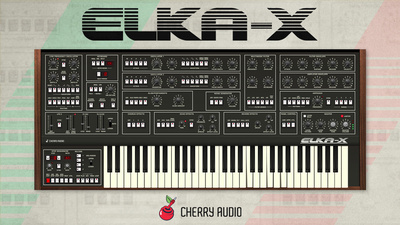
- Cherry Audio website.
- More from Cherry Audio.
- Original Synthex manual on progettosnaps.net
3 responses to “Review: Cherry Audio Elka-X emulation of the Elka Synthex”

 4,7 / 5,0 |
4,7 / 5,0 | 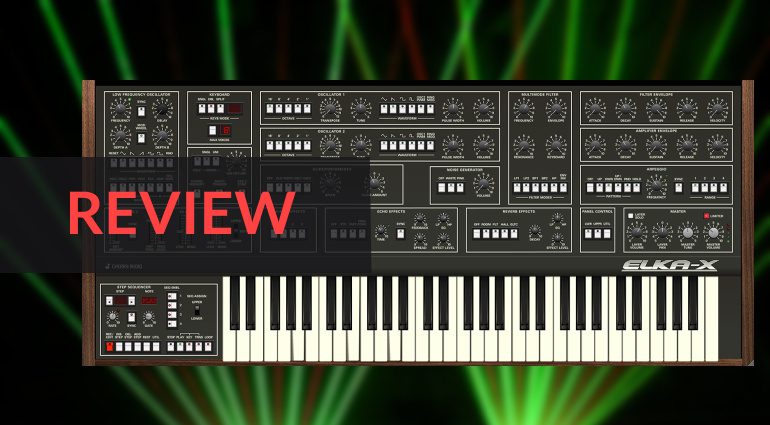
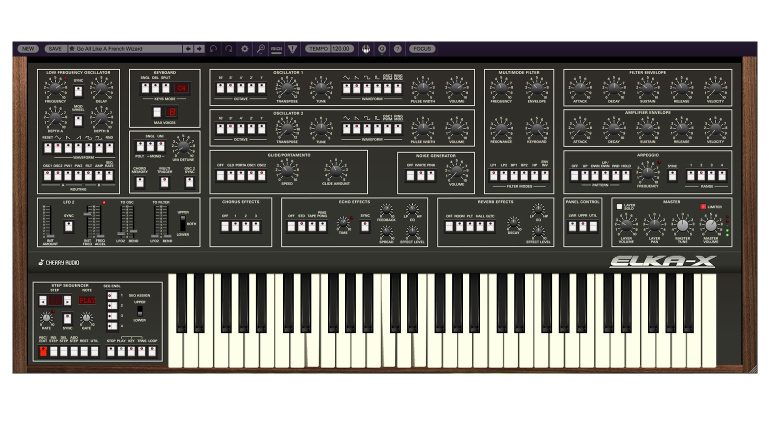
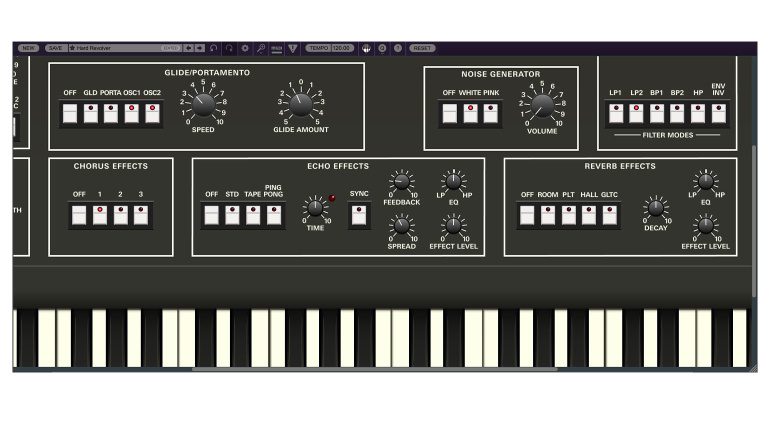
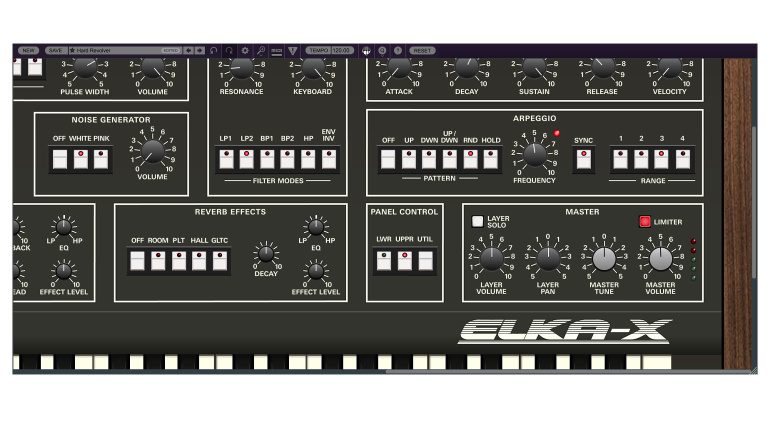
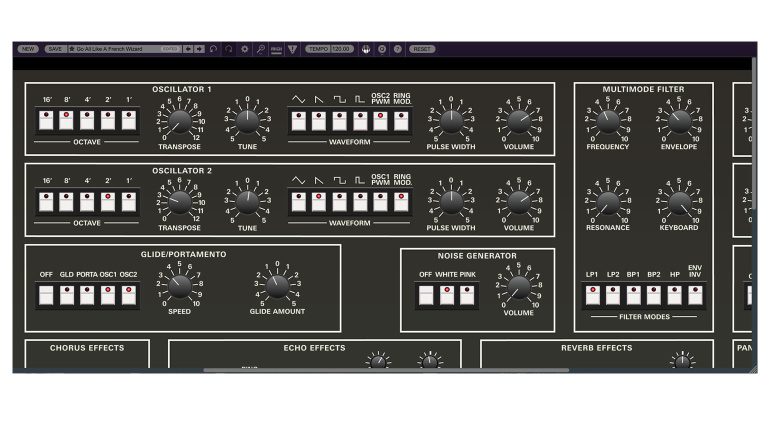
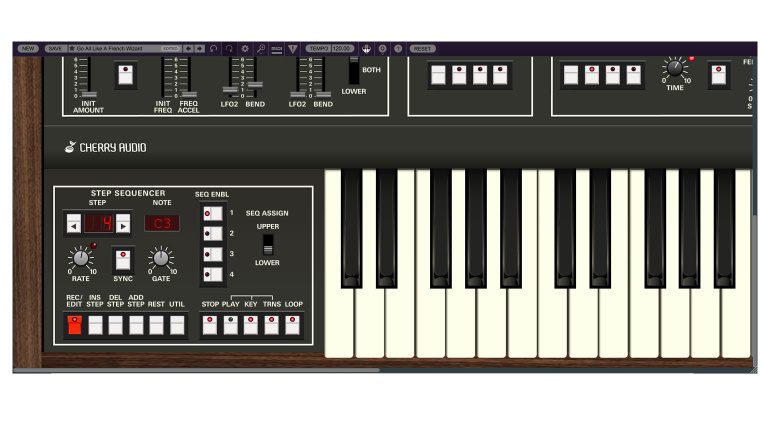






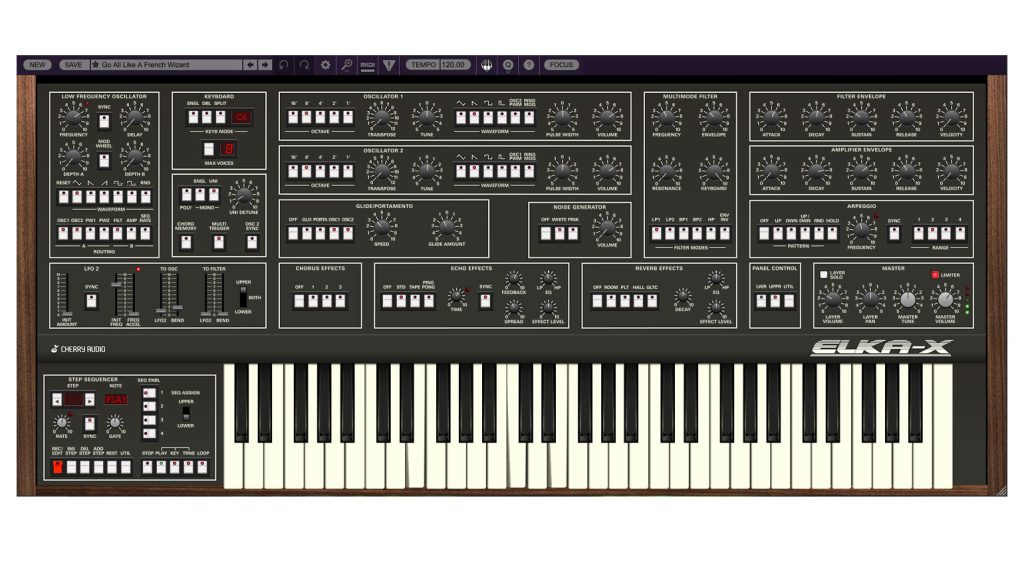
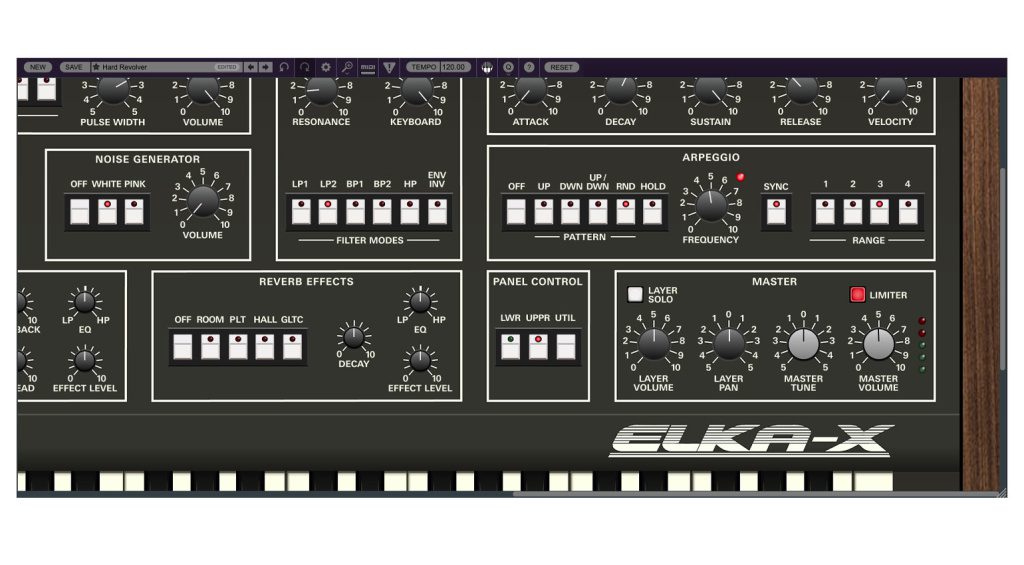
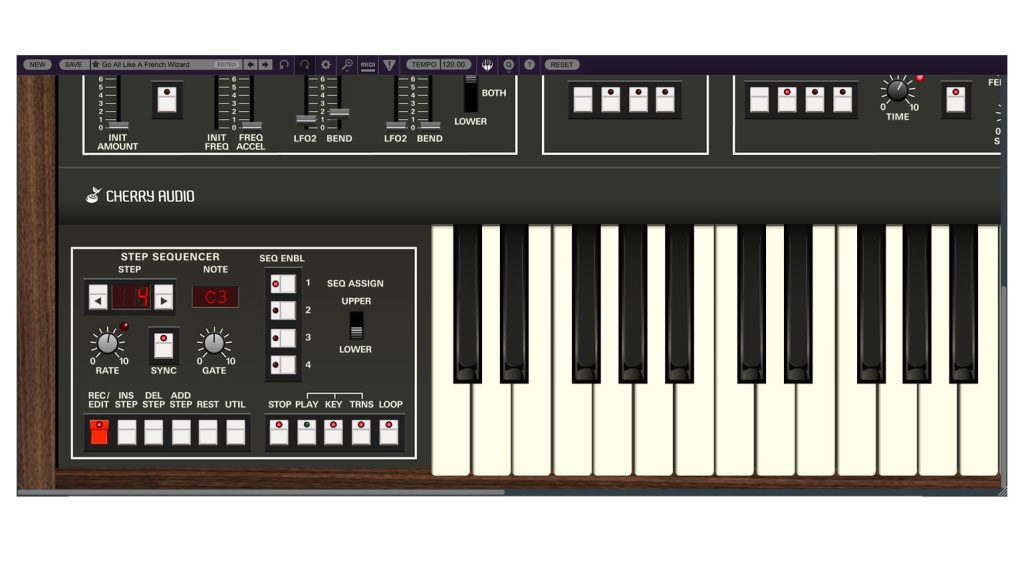
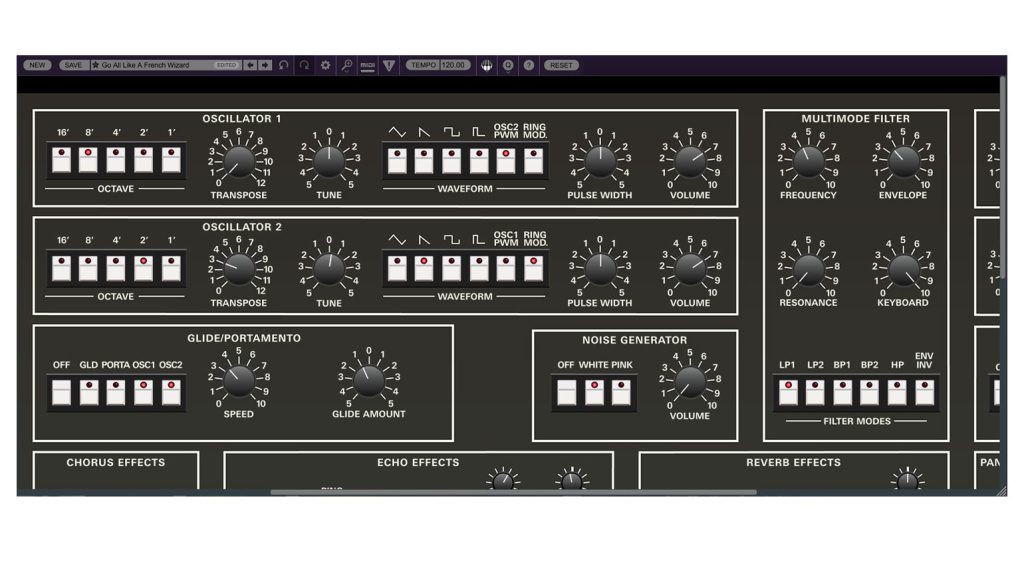
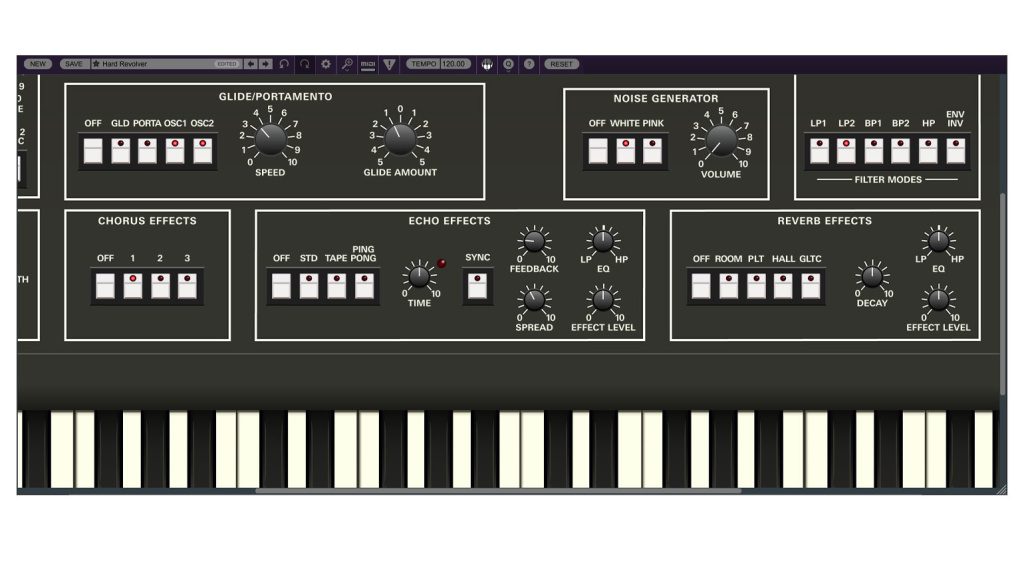

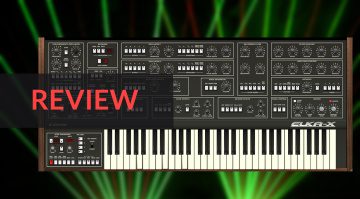

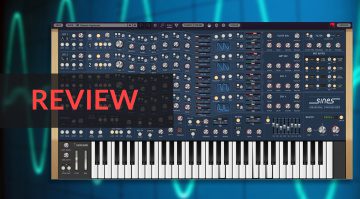

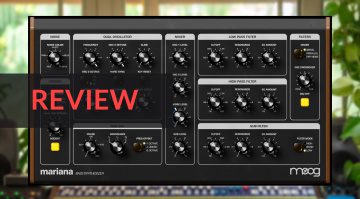
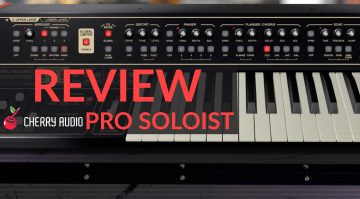
No mention on XILS miniSyn’X or Syn’X? More expensive, certainly. But they also sound amazing.
I think it was because this was a review about this product.
It’s a great pity the ‘review’ doesn’t mentionanything about the installation/authorisation process either.
There are plenty of comments,apparently from users having issues about this on Cherry audio’s own forum. I’m interesting in this soft synth BUT my music pc isn’t continuously internet connected (by choice). Cherry’s own documentation on the Elka X scarcely mentions the installation/authorisation aspect either.